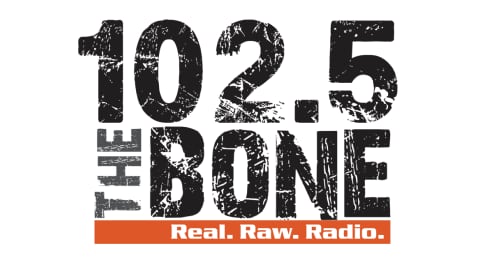Dr. Juan Lavista Ferres was 8 when he discovered his love for technology. He grew up on a farm in Uruguay, but when his mom bought him a computer, he taught himself how to code.
Lavista Ferres is now striving to make a global impact, working as the VP and chief data scientist of the Microsoft AI for Good Lab, where he works with other scientists and researchers to solve some of the world's greatest challenges. They utilize artificial intelligence or machine learning to address problems in health, the environment, humanitarian issues, accessibility and cultural heritage.
“[AI] will make people much significantly more productive. Another area where I found it amazing is that less than 0.5% of the people in the world know how to code,” he told Yahoo News.
In order to code, he said, “You need to know a programming language like Python, or C, or Pascal, and that takes a lot of effort. But now, thanks to these large language models [like ChatGPT], a significant portion of coding you will be able to write in English and convert that into coding.”
Some have raised concerns about AI, whether in connection with plagiarism, theft or eliminating jobs, or an even more sinister possibility, threatening human life altogether. Hollywood movies aren't helping.
But here are several ways that AI is currently helping humanity.
Health care and detecting disease
AI is helping doctors advance the fight against breast cancer.
"The major advantage to AI right now is: It speeds up the reading of the mammogram, so that a radiologist can see more mammograms accurately over a certain period of time," Dr. Larry Norton, medical director of the Evelyn H. Lauder Breast Cancer Center in New York City, told our partners at Good Morning America in March.
The report cited a study that estimates that mammogram screenings miss about 1 in 8 cases of breast cancer, a rate that AI can help to reduce.
Detecting breast cancer isn’t the only way AI is enhancing health care.
Dornoosh Zonoobi knew her passion when she first came across it — medical imaging from ultrasounds. She lights up when she talks about how it has transformed health care.
She eventually founded Medo.ai, a company building artificial intelligence that pairs with ultrasound devices to assist users’ ability to detect common and critical conditions. It was acquired by Exo, a company focused on taking the AI-supported point-of-care-ultrasound everywhere, especially in rural communities.
“Medical imaging is the most important breakthrough we had in medicine really, after the 20th century. So it's absolutely powerful," she said. "I still remember the very first time I read in [a World Health Organization] report that two-thirds of the world's population have zero access to medical imaging.”
She was recently involved in a study that evaluated the feasibility of using AI with point-of-care-ultrasound to screen for infant hip dysplasia (DDH). About 1 in 100 infants need treatment for DDH.
“If you detect it when they're really young, it's so easily treatable," she said. "You can just put the baby in a harness, and the hip will correct itself. The dysplasia would go away.”
A.I. is also groundbreaking for streamlining doctor visits and simplifying data collection.
The New York Times recently featured Dr. Matthew Hitchcock, a family physician in Chattanooga, Tenn., who has an AI helper.
Hitchcock said the technology records patient visits on his smartphone and summarizes them for treatment plans and billing. He lightly edits what the AI produces and is done with his daily patient visit documentation in about 20 minutes, rather than the two hours he would otherwise spend typing up medical notes.
ChatGPT and Generative AI
ChatGPT, an AI chatbot created by OpenAI, became all the rage after launching in November 2022, and kick-started a new wave of chatter about AI.
The technology is a natural language processing system that can mimic human conversations. It can talk to someone about pretty much anything and can assist with things like emails, essays and code, as Lavista Ferres noted. It can write books and compose music and graphic art in minutes, even seconds. Anyone can use it, and it’s free.
“I was lucky enough to learn English when I was young enough and, still, it's hard for me to write in English," he said. "And in a world where you're required to write in English very well, it takes a lot of effort. Today, thanks to the fact that we have these large language models [like Chat GPT], it's much easier for me to express myself in English.”
Other systems comparable to Chat GPT include Google Bard, Microsoft Bing AI Chat and ChatSonic.
Languages
When Steve Toy was 15, he struggled with French in school. His paternal grandmother, he said, told him, “Oh, honey, listen, the best way to learn a language is between the sheets. Get yourself a girlfriend that speaks a language." Toy said, "My 15-year-old head just kind of went like: Wait, my grandmother knows what sex is like? What's going on here?”
Language has become his passion, and that passion led him to becoming CEO of Memrise, a language-learning app, now using AI, like the Membot, to help others pick up new languages.
“So we use these large language models to allow you to have conversations with no human judgment," he said, "and when you either type or speak, you will get a response from the bot, and that response will let you know whether you were understood or not.”
Memrise also has a database of videos that uses AI to analyze your level of knowledge of a language and matches you with the right material.
Sustainability
For 20 years, Dr. Steve Brumby has focused on building what is essentially a living map of the world that can be continuously updated. During the pandemic, he co-founded Impact Observatory, a company that offers AI-powered, on-demand data, through maps that help governments, industries and markets with risk analysis and climate change mitigation, among other things.
“We are now able to offer that any country in the world, any state or local government in the world, will now have the ability to have a map that looks like the official map of the U.S., but for their own country," he said. "And they can get multiple updates a year.”
This is critical, he said, because the most updated map for the U.S. was a 2019 version, and it is the country where mapping is the most advanced. This poses a huge problem for development and resolving issues of land conservation. The maps are color-coded, with categories showing, for example, high- and low-density built areas, crop areas, sparse and dense trees, and rangeland.
“We've built the AI that can now make the maps from the satellite images, and we've shown that we can actually do this quicker than the satellites can collect new images,” Brumby added. "That's important, to preserve the health of the whole state and for biodiversity."


